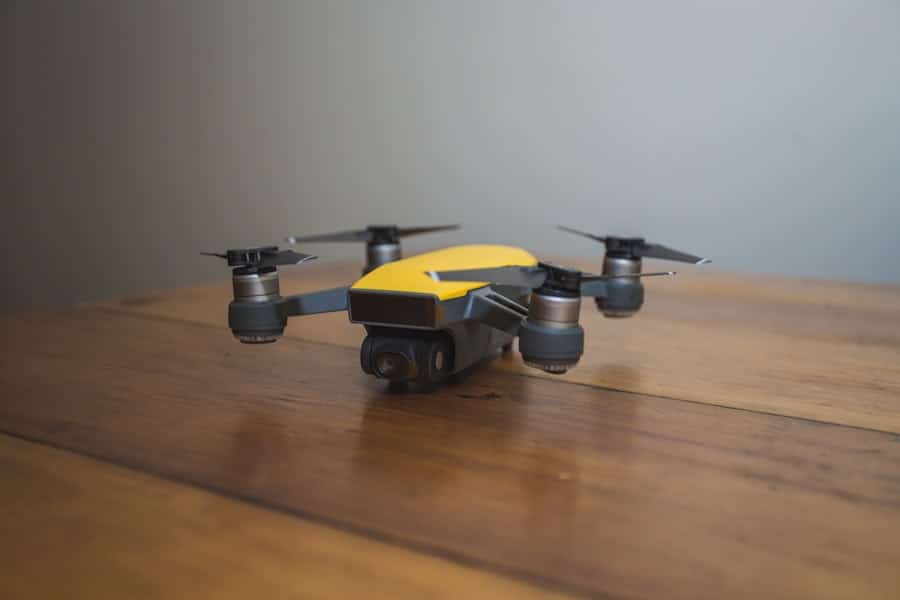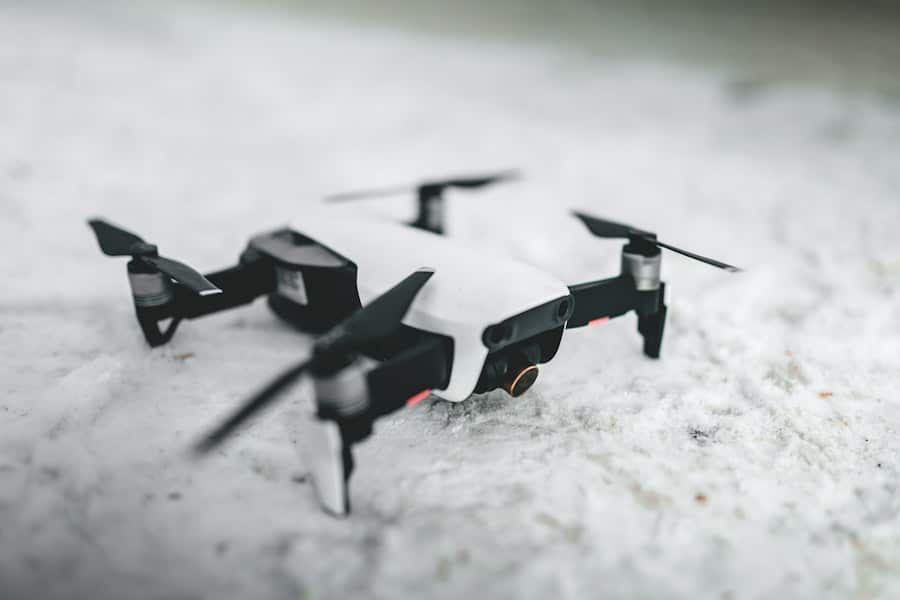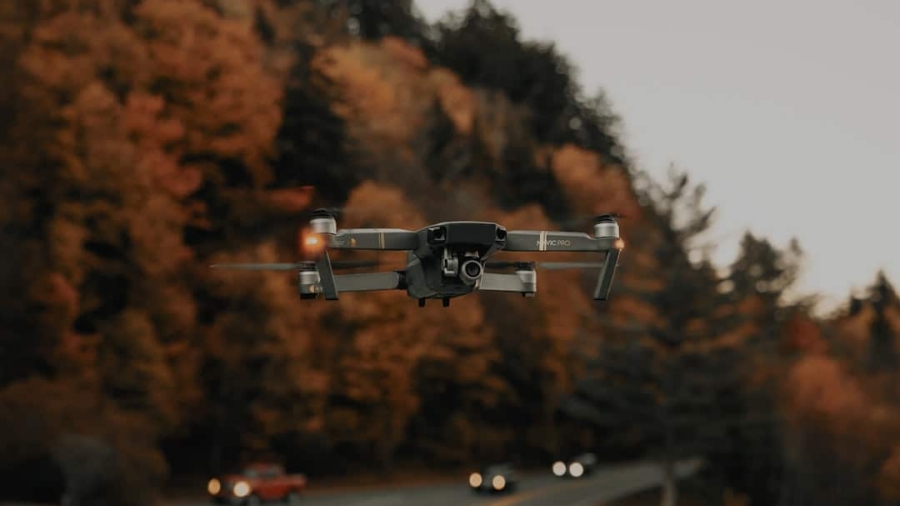The advent of artificial intelligence (AI) has revolutionized numerous sectors, and the field of drone technology is no exception. AI-powered drones are equipped with sophisticated algorithms that enable them to process vast amounts of data in real-time, making them invaluable tools for various applications, including surveillance, delivery, and environmental monitoring. These drones are not merely remote-controlled flying devices; they are autonomous systems capable of making decisions based on the data they collect.
This capability is particularly significant in the context of climate change, where timely and accurate data is crucial for understanding and mitigating its impacts. The integration of AI into drone technology enhances their functionality and efficiency. For instance, AI algorithms can analyze images captured by drones to identify changes in land use, vegetation health, and even wildlife populations.
This level of analysis was previously time-consuming and labor-intensive when conducted manually. With AI-powered drones, researchers can gather and interpret data at an unprecedented scale and speed, allowing for more informed decision-making in climate-related initiatives. As the urgency to address climate change intensifies, the role of these advanced aerial systems becomes increasingly critical.
Key Takeaways
- AI-powered drones are revolutionizing the way we monitor and track climate change, offering new opportunities for data collection and analysis.
- AI-powered drones play a crucial role in climate change tracking by providing real-time data on environmental changes, such as deforestation, glacier melting, and sea level rise.
- The use of AI-powered drones for climate change monitoring offers advantages such as cost-effectiveness, accessibility to remote areas, and high-resolution data collection.
- AI-powered drones have diverse applications in climate change research, including wildlife monitoring, disaster response, and ecosystem mapping.
- Despite their potential, AI-powered drones face challenges and limitations in climate change tracking, such as regulatory hurdles, data privacy concerns, and technological constraints.
The Role of AI-Powered Drones in Climate Change Tracking
AI-powered drones play a pivotal role in tracking climate change by providing high-resolution data that can reveal subtle environmental changes over time. These drones can cover vast areas quickly, capturing images and data that would be impractical for ground-based surveys. For example, they can monitor glacial retreat in polar regions or track deforestation in tropical rainforests, offering insights into how these changes contribute to global warming.
The ability to collect data from hard-to-reach areas makes drones an essential tool for climate scientists who need comprehensive datasets to model climate scenarios accurately. Moreover, AI algorithms enhance the analytical capabilities of these drones. By employing machine learning techniques, drones can identify patterns and anomalies in environmental data that may indicate shifts in climate conditions.
For instance, researchers have utilized AI-powered drones to monitor changes in vegetation cover and soil moisture levels, which are critical indicators of ecosystem health. This real-time monitoring allows scientists to respond more swiftly to emerging environmental threats, such as droughts or floods, thereby improving resilience strategies for affected communities.
Advantages of Using AI-Powered Drones for Climate Change Monitoring

One of the primary advantages of using AI-powered drones for climate change monitoring is their ability to gather data with high precision and accuracy. Traditional methods of data collection often involve extensive fieldwork, which can be both time-consuming and costly. In contrast, drones can be deployed rapidly to collect data over large areas without the need for extensive human resources.
This efficiency not only reduces costs but also allows for more frequent monitoring, enabling researchers to detect changes in the environment as they occur. Additionally, AI-powered drones can operate in diverse weather conditions and challenging terrains where human access may be limited or dangerous. For example, drones equipped with thermal imaging sensors can assess heat patterns in urban areas or monitor wildlife habitats in remote locations.
This capability is particularly beneficial for studying climate change impacts on biodiversity, as it allows researchers to track species migration patterns and habitat alterations without disturbing the ecosystems they are studying. The versatility of these drones makes them indispensable tools for comprehensive climate change research.
Applications of AI-Powered Drones in Climate Change Research
The applications of AI-powered drones in climate change research are vast and varied. One prominent use is in agriculture, where drones equipped with multispectral cameras can assess crop health by analyzing plant stress levels and nutrient deficiencies. This information is crucial for optimizing agricultural practices and ensuring food security in a changing climate.
By providing farmers with actionable insights, AI-powered drones can help mitigate the adverse effects of climate change on food production. Another significant application lies in forest management and conservation efforts. Drones can be employed to monitor forest cover changes, assess tree health, and detect illegal logging activities.
For instance, researchers have used drones to map deforestation rates in the Amazon rainforest, providing critical data that informs conservation policies and enforcement strategies. Furthermore, AI algorithms can analyze this data to predict future deforestation trends based on current patterns, enabling proactive measures to protect vulnerable ecosystems.
Challenges and Limitations of AI-Powered Drones in Climate Change Tracking
Despite their numerous advantages, the deployment of AI-powered drones for climate change tracking is not without challenges. One major limitation is regulatory hurdles surrounding drone usage. Many countries have strict regulations governing airspace and drone operations, which can hinder the ability to deploy these technologies effectively.
Researchers often face bureaucratic obstacles when seeking permits for drone flights, particularly in sensitive areas such as national parks or wildlife reserves. Another challenge lies in the technological limitations of current drone systems. While advancements in AI have significantly improved data processing capabilities, issues such as battery life and payload capacity still pose constraints on drone operations.
For instance, most commercial drones have limited flight times due to battery limitations, which can restrict the area covered during a single mission. Additionally, while drones can collect vast amounts of data, the challenge remains in processing and analyzing this data efficiently to derive meaningful insights.
Future Implications of AI-Powered Drones in Climate Change Monitoring

Looking ahead, the future implications of AI-powered drones in climate change monitoring are promising. As technology continues to advance, we can expect improvements in drone capabilities that will enhance their effectiveness as monitoring tools. Innovations such as longer battery life, improved sensors, and enhanced AI algorithms will enable drones to operate more autonomously and efficiently over extended periods.
This evolution will allow researchers to gather more comprehensive datasets that can inform climate models and policy decisions. Moreover, the integration of AI-powered drones with other technologies such as satellite imagery and ground-based sensors will create a more holistic approach to climate monitoring. By combining data from multiple sources, scientists can achieve a more nuanced understanding of climate dynamics and their impacts on various ecosystems.
This synergistic approach will facilitate better predictive modeling and enable more effective responses to climate-related challenges.
Ethical Considerations in the Use of AI-Powered Drones for Climate Change Tracking
The deployment of AI-powered drones for climate change tracking raises several ethical considerations that must be addressed as this technology becomes more prevalent. One significant concern is privacy; the ability of drones to capture high-resolution images raises questions about surveillance and the potential misuse of data collected during monitoring missions. It is essential for researchers and organizations utilizing drones to establish clear guidelines regarding data collection practices and ensure that privacy rights are respected.
Additionally, there are ethical implications related to the impact of drone operations on wildlife and natural habitats. While drones are often seen as non-intrusive tools for monitoring ecosystems, their presence can still disturb wildlife behavior or disrupt sensitive habitats. Researchers must carefully consider the potential consequences of drone flights on local fauna and flora and implement measures to minimize any negative impacts during their operations.
The Potential of AI-Powered Drones in Addressing Climate Change
AI-powered drones represent a transformative force in the fight against climate change by providing innovative solutions for monitoring environmental changes with unprecedented accuracy and efficiency. Their ability to collect real-time data from diverse ecosystems enables researchers to track climate impacts more effectively than ever before. As technology continues to evolve, these drones will likely become even more integral to our understanding of climate dynamics and our ability to respond proactively.
However, it is crucial to navigate the ethical landscape surrounding their use thoughtfully while addressing regulatory challenges that may impede their deployment. By harnessing the power of AI-driven drone technology responsibly, we can make significant strides toward mitigating the effects of climate change and fostering a more sustainable future for our planet.
In the rapidly evolving field of technology, AI-powered drones are playing a crucial role in tracking climate change, offering unprecedented insights and data collection capabilities. A related article that delves into the broader implications of AI and technology in our daily lives is the discussion on Tesla’s advancements in autonomous driving. This article, titled “Tesla Refutes Elon Musk’s Timeline on Full Self-Driving,” explores the challenges and developments in AI-driven technologies, similar to those used in climate monitoring drones. For more information, you can read the full article here.
FAQs
What are AI-powered drones?
AI-powered drones are unmanned aerial vehicles equipped with artificial intelligence technology that allows them to perform tasks such as data collection, analysis, and decision-making without human intervention.
How are AI-powered drones used to track climate change?
AI-powered drones are used to track climate change by collecting and analyzing data related to environmental factors such as temperature, air quality, and vegetation health. They can also monitor changes in glaciers, sea ice, and other natural features affected by climate change.
What are the benefits of using AI-powered drones for tracking climate change?
Using AI-powered drones for tracking climate change offers several benefits, including the ability to collect data from remote or inaccessible areas, the ability to cover large areas quickly and efficiently, and the ability to analyze complex data sets to identify patterns and trends related to climate change.
What are some examples of how AI-powered drones are currently being used to track climate change?
AI-powered drones are being used to monitor deforestation, track changes in wildlife populations, assess the impact of natural disasters, and study the effects of climate change on ecosystems and biodiversity.
What are the challenges of using AI-powered drones to track climate change?
Challenges of using AI-powered drones to track climate change include the need for advanced technology and expertise to analyze the data collected, the potential for privacy and ethical concerns related to data collection, and the limitations of current regulations and policies governing drone use.

